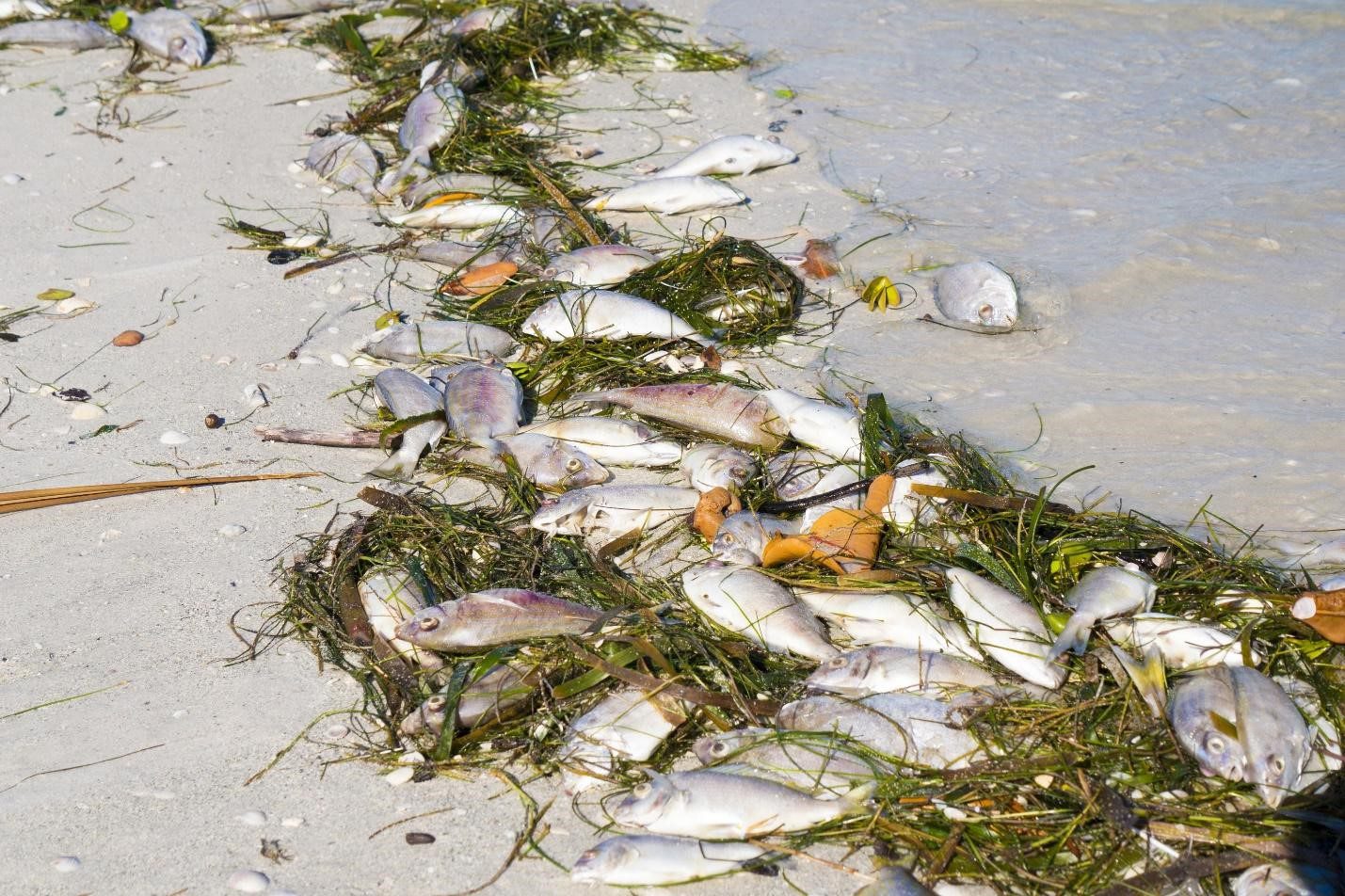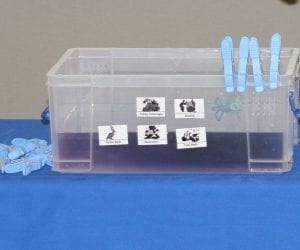The Summer of 2021 was not good for anyone living near or traveling to Florida’s Gulf Coast beaches, because instead of beautiful morning-lit sands and fresh salt water breezes, the Gulf Coast shores were covered in dead marine life and unbreathable air that triggered coughing and respiratory illness. This state of affairs was caused by the phenomena known as a red tide, which is causing more and more damage to coastlines. Historically unwelcomed but somewhat rare, red tides are becoming a more frequent environmental concern.
The post that follows will help you understand the causes of red tides, the impact of red tides, and what can be done to combat them.

Dead fish from `Red Tide` wash up on the shore of Boca Ciega Bay near St. Pete Beach, Florida
What are Red Tides?
A red tide is a type of algal bloom that produces neurotoxins that kill just about everything in their vicinity.
Red tides occur when specific types of algae species living in sea and freshwater grow out of control, producing neurotoxins that are harmful to marine life and humans alike. These neurotoxins are fatal to fish, leave shellfish inedible, make the surrounding air difficult to breathe, and as suggested by the name, can turn water red. Although red tides most commonly occur in the Gulf of Mexico, Gulf of Maine, and along California’s coast, the National Oceanic and Atmospheric Administration (NOAA) has reported harmful algal blooms (HABs) in every U.S. coastal state, and their occurrence may be on the rise.
What Causes Red Tide?
Although the species of algae that cause red tides have existed long before humans walked the Earth, certain human activities are causing them to occur more frequently. Nutrients and sediment from farming, factories, and sewage treatment facilities contaminate water runoff, which eventually flows into the ocean and provides algae with abnormal increases in available nutrition. This creates ideal conditions for harmful algal blooms.
Climate change also has an impact on the increased occurrence of red tides, as high winds and water temperatures become more prevalent. Winds stir up nutrients in the water making them more accessible to algae while the warmer waters create ideal growing conditions for HABs. In addition, scientists predict an increase in tropical storm and hurricane intensity, potentially moving HABs to new locations. In Florida, “a red tide lasted for 17 months after big hurricanes blew through in 2004 and 2005. And in 2017 after Hurricane Irma, another giant red-tide imperiled the state.”

Modeled forecast of respiratory irritation at individual beach locations
The Effects of Red Tide on Wildlife
Although algae are a necessary food and energy source for marine life ecosystems, harmful algal blooms produce high concentrations of neurotoxins which cause massive fish kills. Even worse, the toxic fish don’t just wash up on shore by the masses, but are ingested by larger predators creating a ripple effect throughout an entire food chain. As a result, red tides can cause die-offs of many marine species, like whales and sea turtles. The neurotoxins can even produce a foam that causes seabirds to lose the waterproofing on their feathers, resulting in their death. In Florida, the impact of neurotoxins produced by HABs is well documented by the Florida Fish and Wildlife Conservation Commission.
The Effects of Red Tide on People
Red tides do not just impact marine life, as people can also get sick from the neurotoxins in the water or from ingesting toxic shellfish. In addition, wind can carry aerosol toxins from red tides onto the shore, creating respiratory issues among people with asthma or allergies.
And the impacts of HABs on humans are not just health related. According to NOAA, HABs are a national concern because they affect the ‘health’ of local and regional economies. Red tides cause an estimated $82 million in economic losses each year due to beach and fish closures, decreases in tourism, and seafood revenue loss.
Practical Mitigation is Currently the Best Way to Combat Red Tides
Large scale solutions to reduce harmful algal blooms include tackling the overall causes of climate change. Additionally, preventing runoff from farming, factories, and sewage treatment facilities will reduce the available nutrition in waterways. Treatments of aluminum sulfate are a small-scale solution to fighting algal blooms in small lakes or canals, but it is not effective in larger bodies of water.
At this time, scientists at NOAA believe a practical mitigation approach is the best way to address red tides, rather than trying to prevent it altogether. Therefore, scientists have developed and released biweekly red tide forecasts to let people know how safe an area is for recreation. Using satellite images, scientists can predict the size and impact of a bloom. The goal is to provide communities with advance warnings so folks can adequately prepare for the adverse environmental and health effects of HABs.
As is evident in the case of red tides, reactively responding to an environmental concern proves a difficult approach to sustainability. Harmful algal blooms will continue to increase in occurrence until we find proactive solutions that balance environmental health with ecosystem services.
Image credits: Fish (ID 130131787 © Gerald Marella, Dreamstime.com); Map (Respiratory Forecast by National Centers for Coastal Ocean Science)




